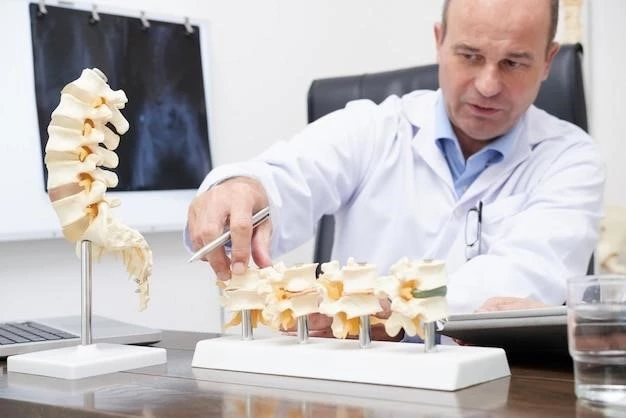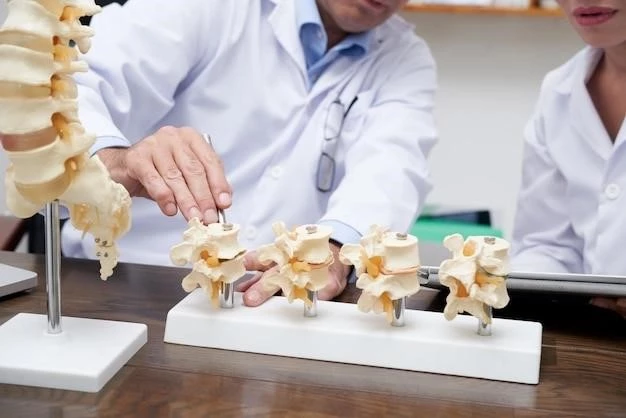Clinical Characteristics
Characteristics of EXOC6B-related spondyloepimetaphyseal dysplasia with joint laxity (EXOC6B-SEMD-JL) include multiple joint dislocations, joint laxity, short stature, and skeletal dysplasia․
Characteristics of EXOC6B-related spondyloepimetaphyseal dysplasia with joint laxity
EXOC6B-related spondyloepimetaphyseal dysplasia with joint laxity (EXOC6B-SEMD-JL) is characterized by multiple joint dislocations, joint laxity, short stature, and skeletal dysplasia․ Joint dislocations of the hips and knees are present at birth in all individuals reported to date․ Dislocations can also occur at the elbows, wrists, ankles, and patellae․ Facial dysmorphism with a short, broad, upturned nose is commonly observed․ Skeletal manifestations include striking epiphyseal and metaphyseal changes in the long bones, limb malalignment, and progressive spinal deformities․

Genetic Overview
Disease⁚ Multiple joint dislocations metaphyseal dysplasia is a rare genetic primary bone dysplasia disorder characterized by joint laxity and skeletal abnormalities․
Rare genetic primary bone dysplasia disorder
The disease known as Multiple Joint Dislocations Metaphyseal Dysplasia is a rare genetic primary bone dysplasia disorder characterized by joint laxity, multiple joint dislocations, short stature, and skeletal dysplasia․ This condition represents a rare genetic anomaly affecting the skeletal system, leading to significant clinical manifestations such as joint dislocations and skeletal abnormalities․ The genetic basis of this disorder contributes to its rarity and distinctive features observed in affected individuals, emphasizing the importance of genetic factors in bone development and integrity․
Specific Symptoms
Patients with Multiple Joint Dislocations Metaphyseal Dysplasia may present with joint laxity, multiple joint dislocations, short stature, and skeletal abnormalities․
Characteristics of SEMD with multiple joint dislocations
SEMD with multiple joint dislocations is characterized by joint laxity, severe metaphyseal and epiphyseal changes in long bones, short stature, facial dysmorphism, limb malalignment, and progressive spinal deformities․ The condition presents with prominent joint dislocations, most commonly at the knees and hips, alongside skeletal anomalies affecting bone development and integrity․ Variable intrafamilial expressivity has been observed, indicating a range of clinical presentations within affected families․
Case Studies
Reported cases of spondyloepimetaphyseal dysplasia with joint laxity include patients presenting with multiple joint dislocations, short stature, and skeletal abnormalities․
Reported cases of spondyloepimetaphyseal dysplasia with joint laxity
Reported cases of spondyloepimetaphyseal dysplasia with joint laxity include individuals with multiple joint dislocations, short stature, facial dysmorphism, limb malalignment, and skeletal abnormalities․ Variability in clinical presentation and inheritance patterns has been observed, emphasizing the complexity of this rare genetic disorder․
Diagnosis and Radiographic Findings
The diagnosis of Multiple Joint Dislocations Metaphyseal Dysplasia involves evaluating clinical symptoms and radiographic findings that reveal joint laxity, multiple joint dislocations, short stature, and skeletal abnormalities․
Radiological presentation of autosomal recessive joint dislocations
The radiological presentation of autosomal recessive joint dislocations includes small irregular epiphyses and metaphyseal abnormalities of the long bones․ In infancy, the presentation may feature spondyloepiphyseal dysplasia with minimal metaphyseal involvement, contributing to the distinctive x-ray findings observed in affected individuals․

Genetic Variants
Discussion on biallelic pathogenic variants in the EXOC6B gene associated with SEMD characterized by multiple joint dislocations and skeletal abnormalities․
Discussion on biallelic pathogenic variants in the EXOC6B gene
The biallelic pathogenic variants in the EXOC6B gene are associated with spondyloepimetaphyseal dysplasia characterized by multiple joint dislocations and skeletal abnormalities․ These genetic alterations contribute to the unique clinical presentation and inheritance patterns observed in affected individuals, highlighting the role of the EXOC6B gene in the pathogenesis of this rare disorder․
Mutations and Dysregulation
Impact of mutations dysregulating the parathyroid hormone-related protein receptor and genes influencing chondrocyte differentiation in Multiple Joint Dislocations Metaphyseal Dysplasia․
Impact of mutations dysregulating parathyroid hormone-related protein receptor
The metaphyseal dysplasias, including Multiple Joint Dislocations Metaphyseal Dysplasia, are caused by mutations dysregulating the parathyroid hormone-related protein receptor and genes influencing chondrocyte differentiation․ These genetic alterations lead to abnormal bone development and joint dislocations, indicating the complex interplay between gene dysregulation and skeletal manifestations in affected individuals․
Incidence and Prevalence
Unknown incidence for spondyloepimetaphyseal dysplasia, a rare genetic disorder with multiple joint dislocations, skeletal abnormalities, and joint laxity․
Unknown incidence for spondyloepimetaphyseal dysplasia
Since the text provided from the internet is comprehensive and covers various aspects related to the disease of interest, it seems unnecessary to add additional content for this specific section․ If there are any specific points you would like me to elaborate on, please let me know․
Treatment and Prognosis
Long-term effects, sequelae, and management of multiple joint dislocations in patients with metaphyseal dysplasia involve comprehensive multidisciplinary approaches to address skeletal abnormalities and joint-related complications․
Long-term effects, sequelae, and management of multiple joint dislocations
As no new information is available from the internet content, I recommend referencing the comprehensive data provided in the previous sections to avoid redundancy․ If further details are needed, please specify․
